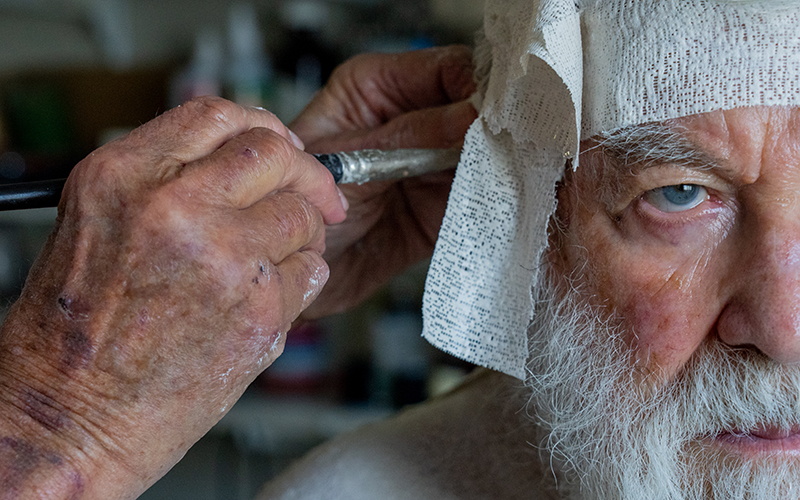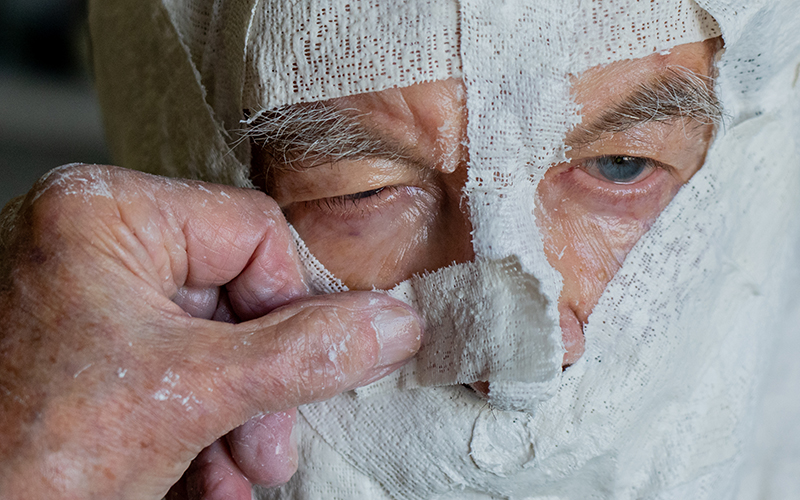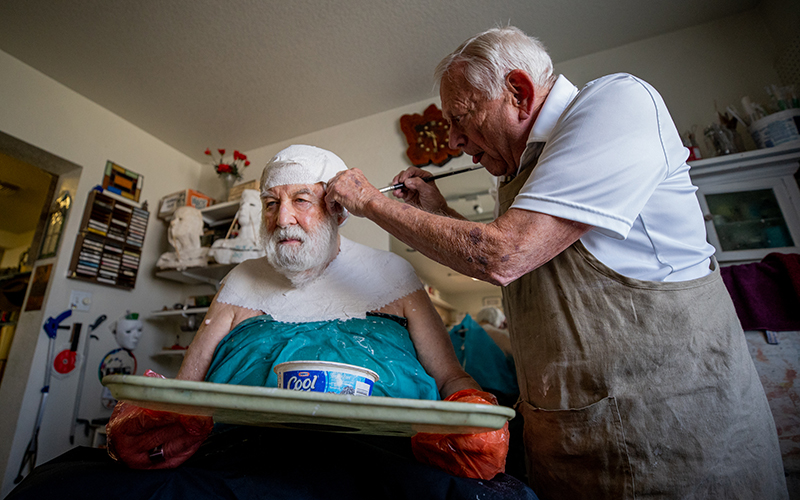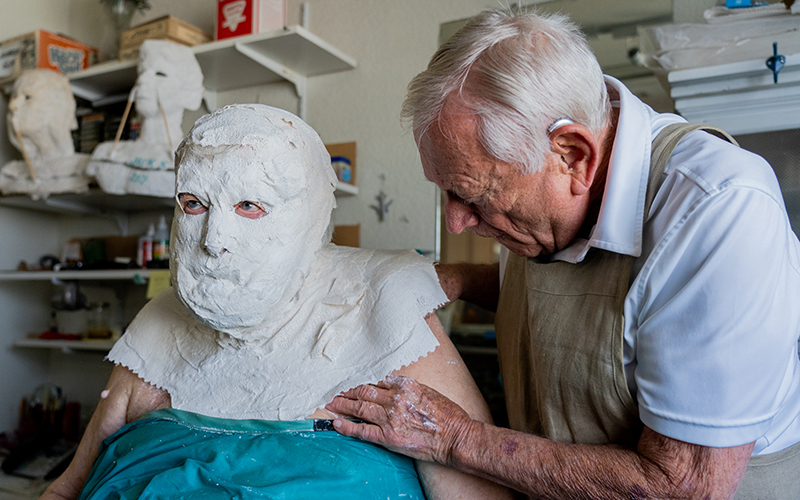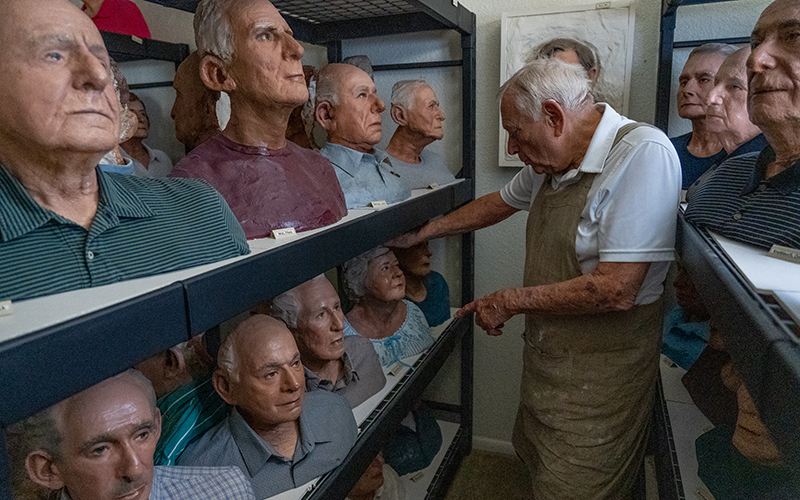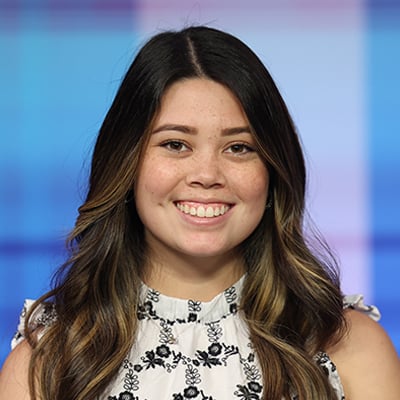Along with casting their faces, Sutz captures his subjects’ stories on video and paints scenes they recall from the Holocaust – the genocide of an estimated 6 million people in Adolf Hitler’s “Final Solution” from 1941 to 1945.
Salinger’s story goes back to Kristallnacht, or the Night of Broken Glass, in 1938. On Nov. 9 and 10, Nazis torched and vandalized thousands of Jewish synagogues, homes, schools and businesses across Germany. About 100 people were killed and 30,000 Jewish men were arrested and sent to concentration camps.
“I remember very vividly the broken glass – I could see it from our apartment across the street – and the smoke from the burning synagogue was just a block away,” said Salinger, 89. “It was a very vivid memory for me; I was 6 years old.”
Roughly two months later, on Jan. 12, 1939, his family fled to the U.S.
“I’m doing this really for my parents,” Salinger said. “They would be very proud to know of my involvement today.”
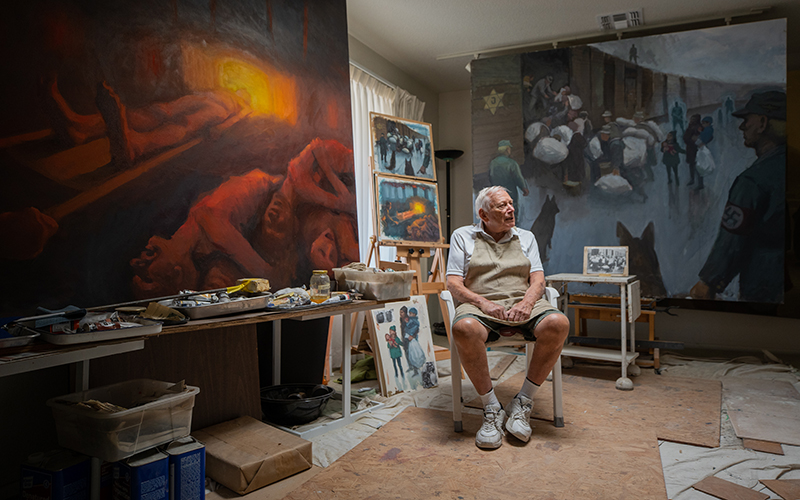
Artist Robert Sutz sits in his art studio in Scottsdale on Feb. 12, 2022, next to several of his oil paintings. The two large paintings to his left and right will become part of a 42-foot art installation depicting the horrors of the Holocaust. (Photo by Samantha Chow/Cronkite News)
Sutz, who is 92, said his inspiration for creating life masks comes from his father, President Abraham Lincoln and film director Steven Spielberg.
His father, who was Jewish, was born in Bialystok, Poland, but moved to Chicago when he was 12. Years later, when Hitler began his rise to power, Sutz’s father tried to warn his family and get them to move to the U.S., but they refused.
“They thought that Hitler was a crazy man and that people aren’t going to pay attention to him,” Sutz recalled.
The rest of the family later died in concentration camps.
Many years later, shortly after Sutz’s 13th birthday, he visited an exhibit where a life mask of Abraham Lincoln was on display.
“I got the chills because I felt his presence. It was something that really excited me,” Sutz said. “I told myself at an early age that I would like to learn how to make life masks.”
He eventually began making masks of family members, but it wasn’t until the 1990s that Sutz found a deeper purpose for creating life masks.

